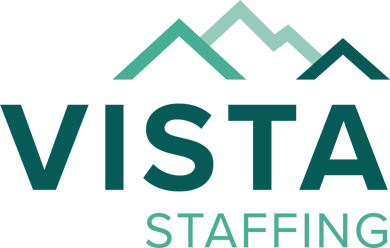Back to The Workforce Optimization Blog
Defining Healthcare Staffing Challenges: Finding the Right Candidate

When a healthcare organization is staffing its facility, it’s of the utmost importance to identify skilled, proficient, and ethical candidates. Talented healthcare providers lead to better patient outcomes, and providers with integrity tend to act ethically and honorably, even if they make a mistake.
That’s why healthcare organizations should have a rigorous process in place for vetting providers. If your organization overlooks red flags, it could lead to extra operating costs, inadequate patient care, or, worst-case scenario, potential lawsuits due to malpractice.
Here are some best practices your organization can follow when vetting and recruiting candidates, either for long-term or contingent staffing positions.
Look out for red flags
The first step in avoiding healthcare staffing challenges includes spotting any obvious red flags. A glance at a provider’s resume or a few targeted questions can help you pinpoint a potential problem employee.
Length of job service
How long has the candidate been at each job on their resume? A few short stints aren’t always an issue, but you want to see someone who can establish consistency in their role. If they haven’t been at a job longer than six months, it may be a sign that their work is subpar, or they aren’t reliable. One or two employment gaps can be expected, but multiple employment gaps of varying length can begin to paint a picture of someone without a cohesive career journey. Finally, if they have a resignation or termination that seems abrupt or they don’t offer an explanation, this can also be a reason for concern.
Schooling and training gaps
Does their education match up with their work history? Pay attention to whether a candidate’s education aligns with their chosen career path. If they’ve had a residency gap, this could also be a warning sign. If they’ve changed residency programs, this could mean they’ve been disciplined or let go due to poor performance.
Changing residency specialties could also be indicative of uncertainty in their career path. You’ll want to ask the candidate questions to tease out their story. The narrative behind their decision-making should make sense. If they legitimately pursued a different specialty, they’ll likely have a convincing explanation for why they changed course. Otherwise, they may be covering for termination.
Training gaps could potentially indicate issues with authority, poor job performance, or indecisiveness about their career. Look for candidates with a consistent, logical arc to their professional endeavors. It’s not the end of the world if the candidate pursues a different specialty mid-career, but frequent changes could mean they have an underlying issue that would impact their performance.
Certifications
You’ll also want to determine whether they have the necessary certifications required for their area of expertise. Some certifications aren’t requirements but demonstrate proficiency. If they don’t have any certifications, it could indicate their professional skills are lacking.
Other red flags
Some other common red flags to be on the lookout for during the recruitment process include:
- Legal issues such as court cases, jury verdicts, and settlements
- Inferior people skills
- Poor communication skills
- Underdeveloped sense of emotional intelligence
- Someone who holds little to no professional liability insurance
- An inability to get in touch with the candidate’s references (69% of employers said they changed their mind about a candidate after speaking with a reference)
Not all of these may necessarily rule a candidate out, but they should at least give you pause to follow up with them.
Finding the right candidate
So now that you’ve considered how to avoid the wrong candidate, how do you find the right one? The answer to this will depend on your specific facility and practice. What traits do you value the most in your candidates? For an answer to this question, look at your current top-performing providers. What qualities do they possess? You’ll want to emulate these candidates to create more of the same success. Consider which traits can help your facility contain costs.
For example, you may look for a candidate with great attention to detail. A provider like this is less likely to make an error in diagnosing or documenting a patient’s care because they will be thorough with their examination and follow-up. That provider is more likely to produce a better patient outcome and save costs associated with poor patient care.
To find the right candidates, you’ll want to identify two main components:
- A well-defined set of values and traits you want your providers to adhere to
- A strong company culture that attracts the best candidates
What kind of culture attracts the best candidates? A culture that values:
- Transparency during the recruitment process
- Excellence in care
- Compensating the best providers appropriately while offering generous benefits
Building this kind of value set and culture may seem costly upfront, but it will save you financially over time. A strong organizational culture does more than permeate to the staff — it also positively impacts patient care. By concentrating on staffing your organization with the best providers who represent the right fit for your team, you’ll limit problems, create happier patients, and contain organizational costs.
How to ensure you consistently come up with superior healthcare staffing solutions
Addressing healthcare staffing challenges can be a bit of a balancing act. While it’s critical to stay aware of red flags, it’s also crucial to know what you want in a candidate. Your candidates’ CVs and interview answers will give you a lot of useful data to make staffing decisions.
Of course, it helps to work with a trusted partner who understands how to find candidates that fit your organization. VISTA can provide you with the staffing solutions you need to find the right providers. For more information on how we can help you find qualified clinicians, contact us today.



